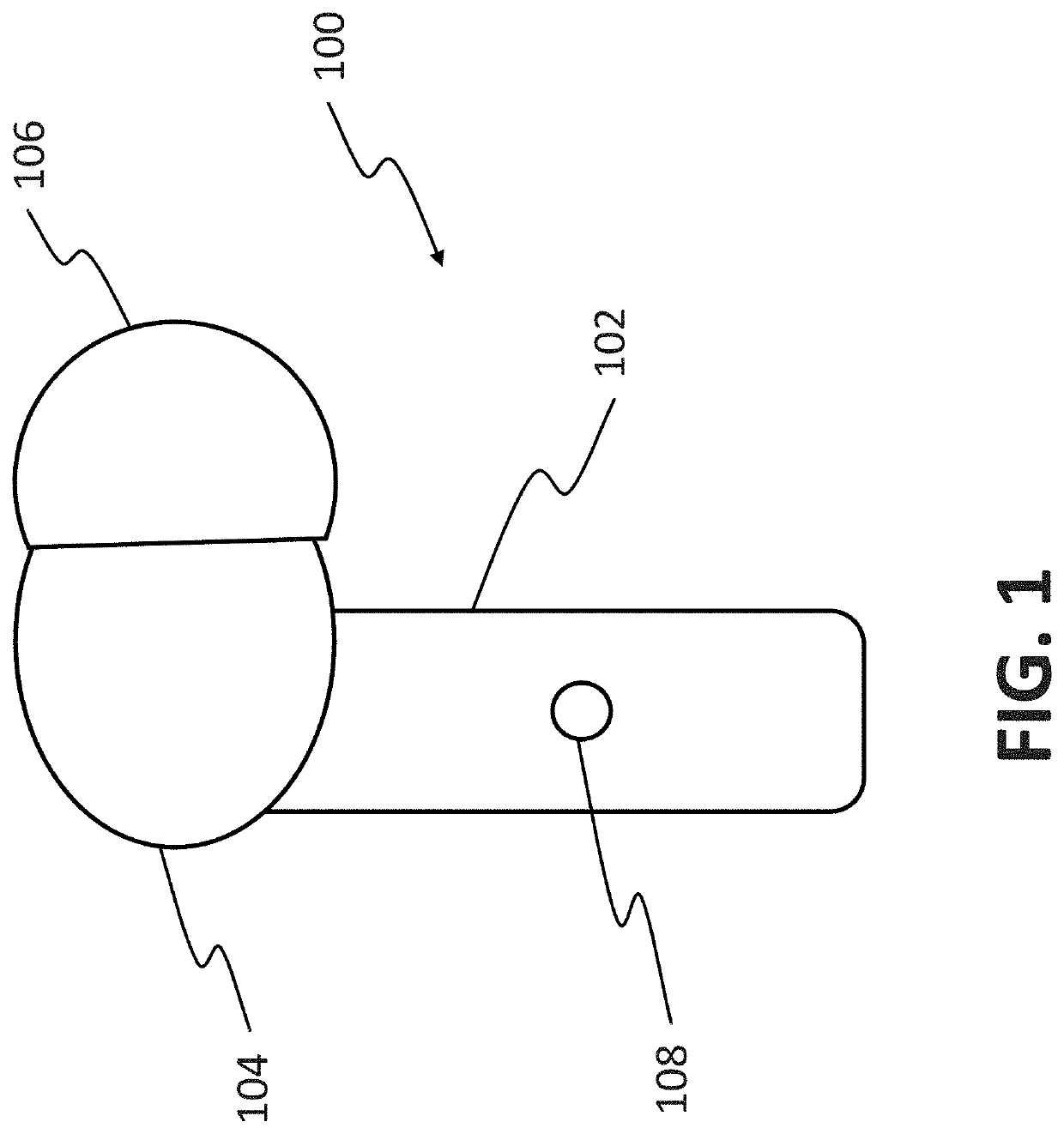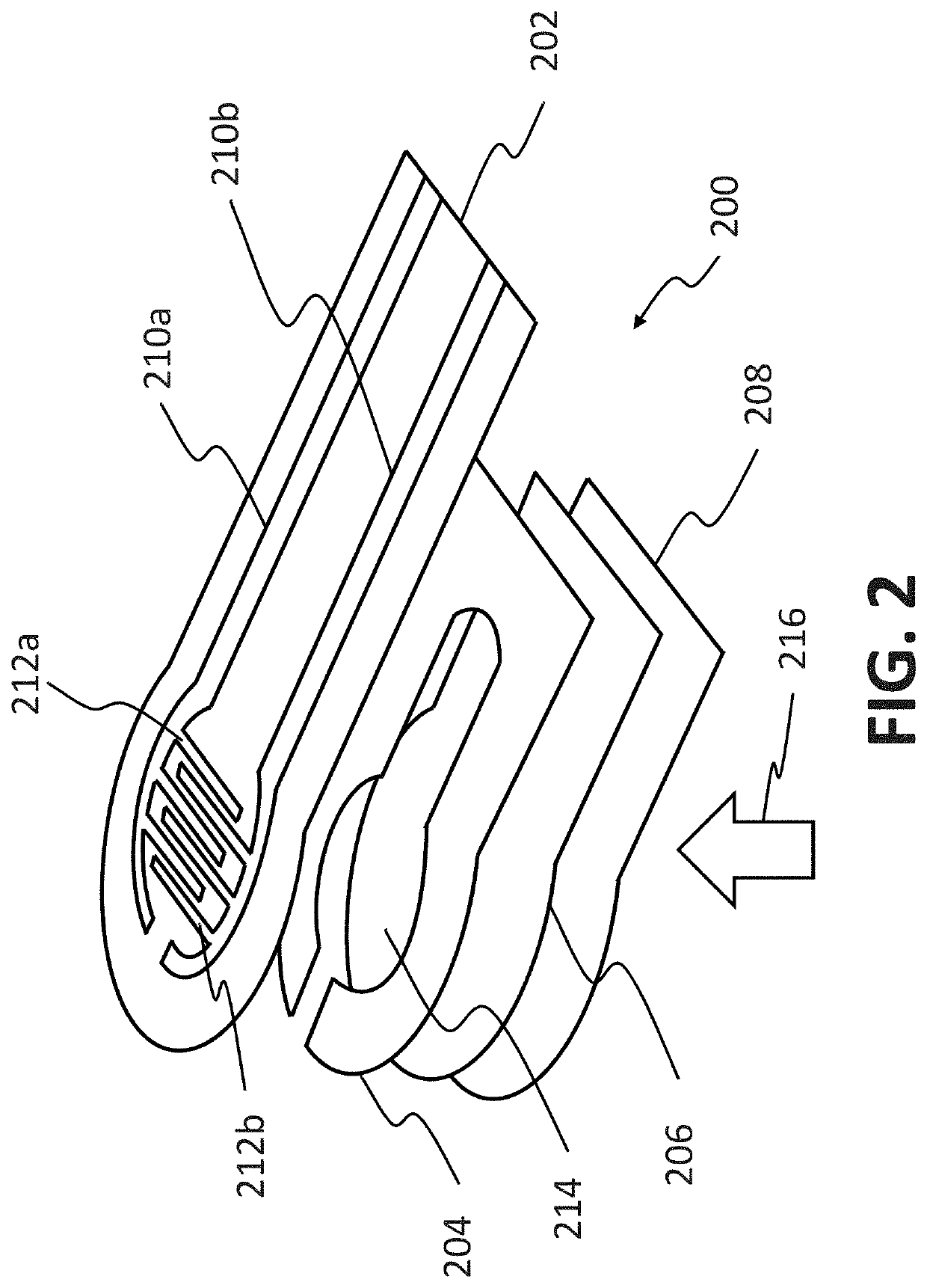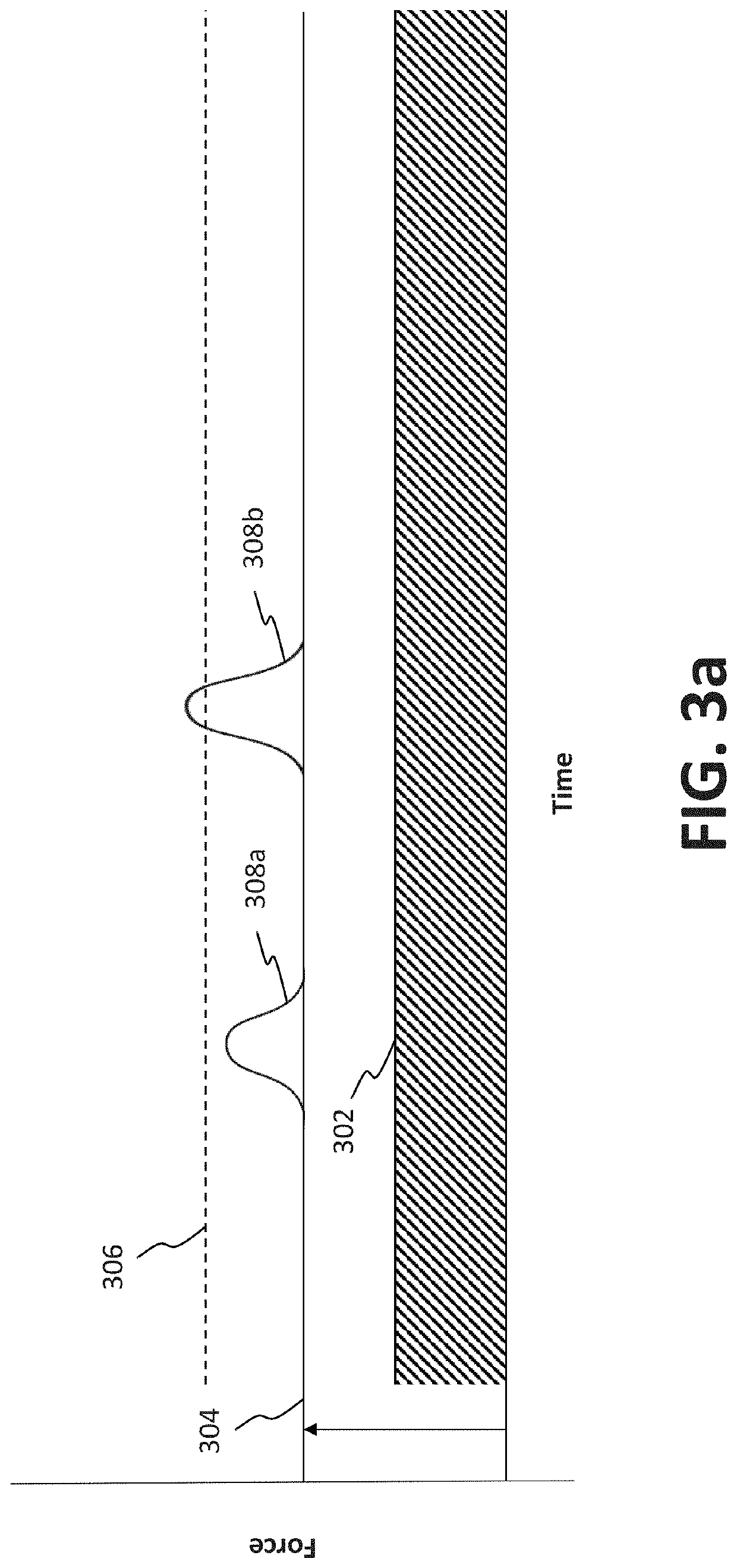User input element
a technology of input element and input input, which is applied in the direction of electrical transducers, instruments, force measurement, etc., can solve the problems of capacitive touch interface, discomfort in the ear canal, and all the problems of these solutions
- Summary
- Abstract
- Description
- Claims
- Application Information
AI Technical Summary
Benefits of technology
Problems solved by technology
Method used
Image
Examples
Embodiment Construction
[0035]FIG. 1 shows an embodiment of an in-ear audio listening device 100. The in-ear audio listening device 100 comprises a body portion 102 and a head portion 104. In some embodiments, the body portion 102 and the head portion 104 are formed integrally as a single body. The body portion 102 may comprise electronics for receiving signals from an associated electronic media playback device (not shown) to enable audio to be produced by the in-ear audio listening device 100. The media playback device may be a smartphone, tablet, laptop computer, desktop computer, or any other device capable of controlling audio playback via the in-ear audio listening device 100. The in-ear audio listening device 100 may communicate with the media playback device through a wired or wireless connection. The head portion 104 comprises a sound producing device, for example a speaker, for producing the audio. In some embodiments, the in-ear audio listening device 100 has an ear tip 106 for insertion into th...
PUM
 Login to View More
Login to View More Abstract
Description
Claims
Application Information
 Login to View More
Login to View More - R&D
- Intellectual Property
- Life Sciences
- Materials
- Tech Scout
- Unparalleled Data Quality
- Higher Quality Content
- 60% Fewer Hallucinations
Browse by: Latest US Patents, China's latest patents, Technical Efficacy Thesaurus, Application Domain, Technology Topic, Popular Technical Reports.
© 2025 PatSnap. All rights reserved.Legal|Privacy policy|Modern Slavery Act Transparency Statement|Sitemap|About US| Contact US: help@patsnap.com



